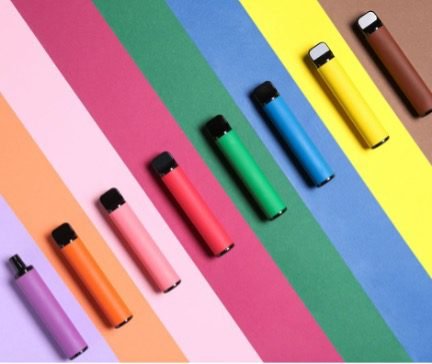Western Sydney University has had a smoke-free campus since 2014, but vaping has still been an issue of misconduct. This confusion is primarily related to the different environments that vaping creates compared to smoking. We can smell smoke and tobacco with cigarettes, whereas with vaping, the smell is often sweet or far less noticeable.

The university’s smoke policies exist to maintain a healthy environment for all employees, students and visitors. For a smoke-free environment, the policy lists;
● The action of smoking includes all forms of tobacco and non-tobacco products, including cigarettes and e-cigarettes.
● The production of second-hand smoke.
● Use of a personal vaporiser, also known as use of e-cigarettes.
● These policies apply to all university premises, including university vehicles.
This marks the third amendment of the university’s smoke-free policies, now revised in 2022 to emphasise the rules around vaping and electronic cigarettes. As we navigate these policies, let’s delve into the broader landscape around vaping and why it seems to be an unstoppable phenomenon.

What is Vaping?
Vaping has been presented as a tool to help quit smoking but has also become an addiction.
Vaping has the image of being a better alternative to cigarettes due to the lack of tobacco, cigarette smell, and a variety of flavours, including things considered sweet and appealing.
A vape pen or stick is simply another term for an e-cigarette, and with a doctor’s supervision and prescription is used as a tool to help long-term smokers give up the habit. When a doctor prescribes e-cigarettes and vape liquid, the levels of nicotine inhaled can be controlled.
According to Healthline, the average cigarette contains 10 mg to 12 mg of nicotine. The nicotine inhaled can be as little as 2 mg for people using vaping to quit.
In ABC’s Four Corners documentary The fierce battle over Vaping in Australia, the cheap and disposable vape pens often used by teenagers and young people were analysed by the University of Wollongong. Dr Celine Kelso reveals that:
● Packaging often fails to disclose nicotine due to legal constraints, despite holding substantial amounts.
● There is high nicotine concentration in vape pens and other chemicals for flavouring and scent, and the health implications are unknown.
Issues arise with the mass production of vape pens as they become a popular commodity, and cheaper and more disposable variations of vaping become more available. What was once a tool to help people reduce a harmful addiction has now become a part of the addiction itself. Children as young as 14 are vaping and developing the habits that anti-smoking movements have been trying to avoid.
Research shows that nicotine affects the developing brain in areas such as concentration, memory, and learning. Starting at a young age doesn’t just mean dependence on vaping, but it can also escalate to other harmful habits.
According to the Alcohol and Drug Foundation, the majority of children between 12-17 years who have vaped in the past have not needed to purchase or obtain a vape pen themselves. Most have gotten the last e-cigarette they had used from friends (63%), siblings (8%) or parents (7%), whereas 12% of students reported buying an e-cigarette themselves.
The flavours and scents only make the sensation more appealing to children. While the smell of cigarettes can be easily recognised and often seen as unappealing, vaping can be harder to detect and deter.
Criticisms of vaping companies targeting children or young adults in ad campaigns have arisen, particularly with the American company Juul Labs, Inc. In just one of many cases, Juul has paid a $462 million settlement to resolve a lawsuit regarding targeting children in advertisements.
What is Big Tobacco?
In 2018, a large tobacco giant called Altria paid $12.8 billion for a 35% stake in Juul despite their mission to help people quit smoking, raising questions around their motives, and whether they see the rise of e-cigarettes as a threat.
The Australian Council on Smoking and Health has identified three major companies of big tobacco in Australia:
● British American Tobacco Australia.
● Phillip Morris (Australia) Limited.
● Imperial Tobacco Australia Limited.
An article from the Financial Review found a paper trail showing how Philip Morris International was paying for support for the legalisation of e-cigarettes in Australia.
Support has also been shown in the political sphere, where Senator Hollie Hughes of the Liberal Party cites international studies to support the belief that vaping can help with smoking addiction. However, there are just as many research findings to prove that vaping is harmful and will encourage dependence on nicotine in the next generation.
What makes the policies surrounding these issues complex, is that both statements are factual. While not as effective as quitting entirely, vaping serves as a ‘harm reduction’ technique for long-time smokers.
Meanwhile, young individuals are drawn to vaping due to its deviation from conventional anti-smoking messages. The absence of cigarette odour, tobacco, and the assortment of flavours paints vaping as a trendy and harmless practice, concealing the health risks associated with nicotine and other harmful substances.


